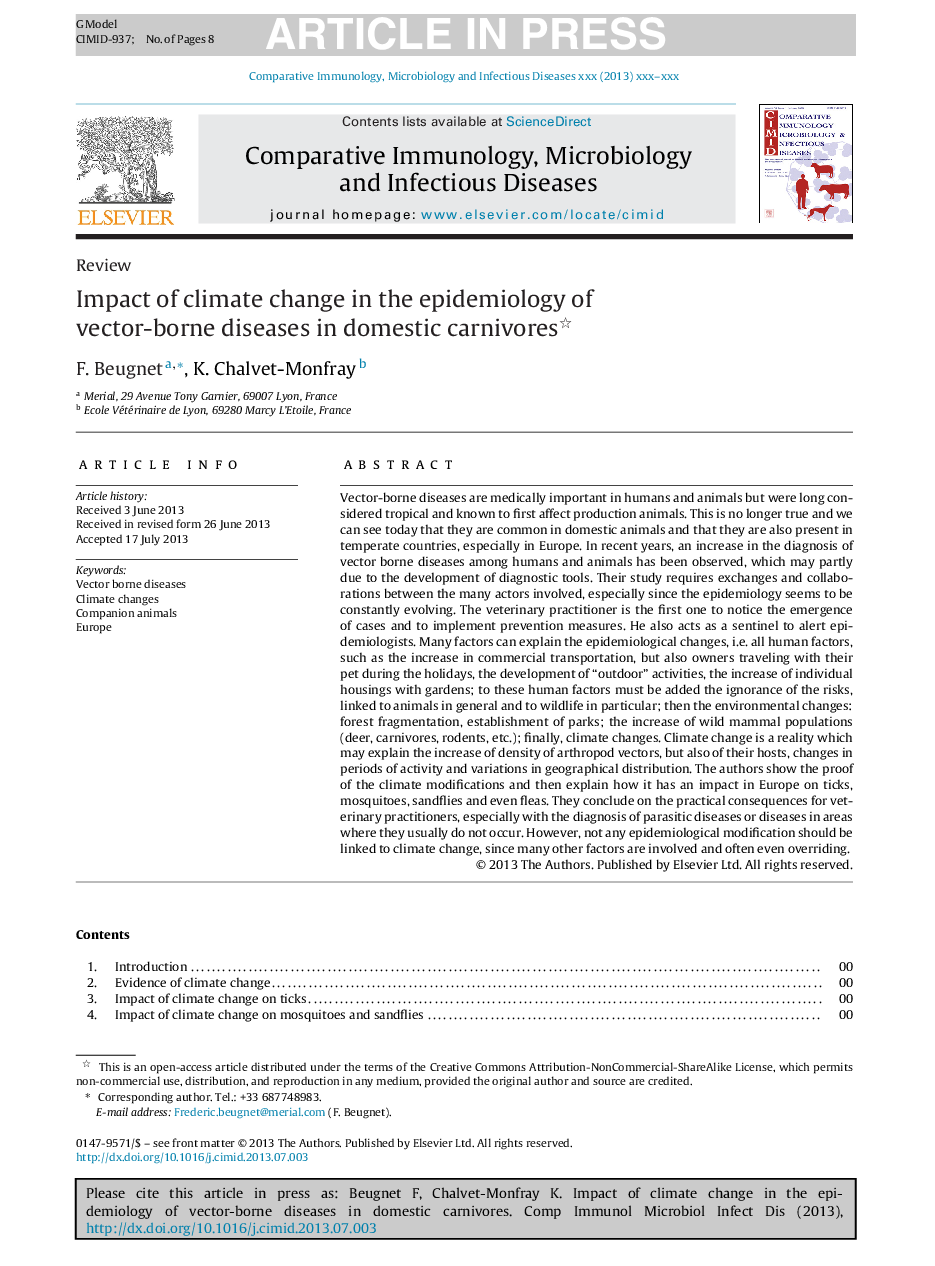| Article ID | Journal | Published Year | Pages | File Type |
|---|---|---|---|---|
| 10971351 | Comparative Immunology, Microbiology and Infectious Diseases | 2013 | 8 Pages |
Abstract
Vector-borne diseases are medically important in humans and animals but were long considered tropical and known to first affect production animals. This is no longer true and we can see today that they are common in domestic animals and that they are also present in temperate countries, especially in Europe. In recent years, an increase in the diagnosis of vector borne diseases among humans and animals has been observed, which may partly due to the development of diagnostic tools. Their study requires exchanges and collaborations between the many actors involved, especially since the epidemiology seems to be constantly evolving. The veterinary practitioner is the first one to notice the emergence of cases and to implement prevention measures. He also acts as a sentinel to alert epidemiologists. Many factors can explain the epidemiological changes, i.e. all human factors, such as the increase in commercial transportation, but also owners traveling with their pet during the holidays, the development of “outdoor” activities, the increase of individual housings with gardens; to these human factors must be added the ignorance of the risks, linked to animals in general and to wildlife in particular; then the environmental changes: forest fragmentation, establishment of parks; the increase of wild mammal populations (deer, carnivores, rodents, etc.); finally, climate changes. Climate change is a reality which may explain the increase of density of arthropod vectors, but also of their hosts, changes in periods of activity and variations in geographical distribution. The authors show the proof of the climate modifications and then explain how it has an impact in Europe on ticks, mosquitoes, sandflies and even fleas. They conclude on the practical consequences for veterinary practitioners, especially with the diagnosis of parasitic diseases or diseases in areas where they usually do not occur. However, not any epidemiological modification should be linked to climate change, since many other factors are involved and often even overriding.
Related Topics
Life Sciences
Agricultural and Biological Sciences
Animal Science and Zoology
Authors
F. Beugnet, K. Chalvet-Monfray,
